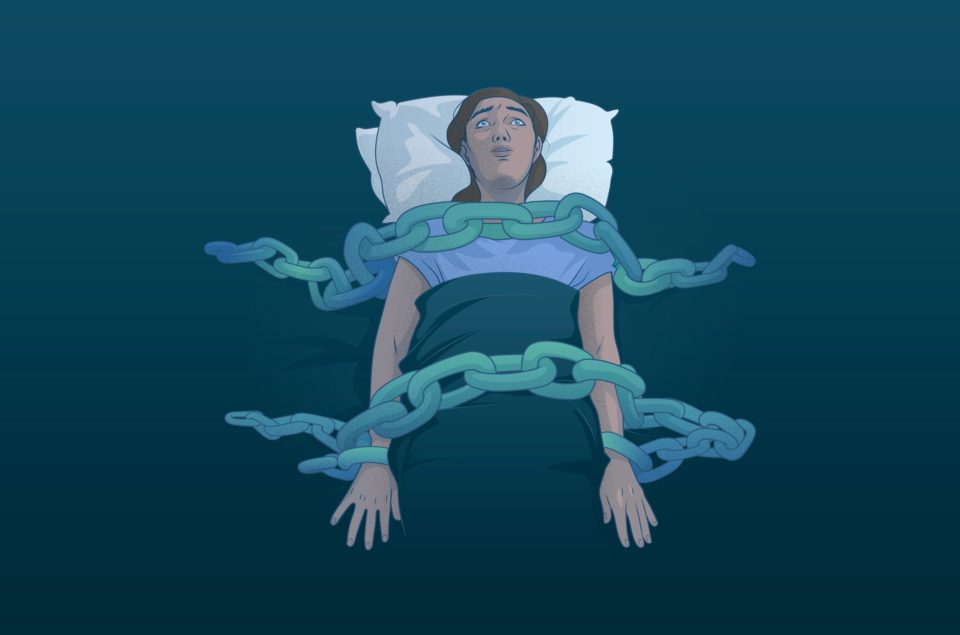Understanding Sleep Paralysis: Unraveling the Mysteries of a Peculiar Phenomenon
Understanding Sleep Paralysis:
Unraveling the Mysteries of a Peculiar
Phenomenon
Sleep paralysis is a unique and often perplexing phenomenon that affects individuals during the transitional stages between wakefulness and sleep. In this article, we'll delve into the intricacies of sleep paralysis, exploring its causes, symptoms, and potential coping mechanisms.
Introduction
Sleep paralysis is a transient condition characterized by a momentary incapacity to move or vocalize, typically occurring during the transition phase between wakefulness and sleep. While it may last a few seconds to a couple of minutes, the experience can be both bewildering and distressing for those who encounter it.
What Happens During Sleep Paralysis?
Muscle Immobility
One of the hallmark features of sleep paralysis is the temporary paralysis of voluntary muscles. This immobility occurs as the brain transitions between different stages of sleep, inhibiting physical movement.
Conscious Awareness
Individuals experiencing sleep paralysis often remain conscious and aware of their surroundings. This heightened awareness can contribute to the eerie and sometimes frightening nature of the experience.
Causes of Sleep Paralysis
Disruption of REM Sleep
Sleep paralysis is closely tied to the rapid eye movement (REM) stage of sleep. When this stage is disrupted, the normal boundaries between dreaming and wakefulness become blurred, leading to the phenomenon.
Sleep Deprivation and Irregular Sleep Patterns
having irregular sleep patterns and not getting enough sleep can elevate the chances of encountering episodes of sleep paralysis. Maintaining a consistent sleep schedule is crucial for minimizing the risk.
Narcolepsy and Other Sleep Disorders
Sleep disorders, such as narcolepsy, are associated with an increased susceptibility to sleep paralysis. Understanding and treating underlying sleep disorders can help manage and prevent episodes.
Symptoms of Sleep Paralysis
Sensation of Pressure on the Chest
Many individuals report a feeling of pressure on their chest during episodes of sleep paralysis. This sensation, often described as a weight or presence, adds to the overall unsettling nature of the experience.
Hallucinations
Visual or auditory hallucinations may accompany sleep paralysis. These hallucinations can range from seeing shadowy figures to hearing indistinct voices, contributing to a sense of dread.
Coping Mechanisms and Prevention
Improving Sleep Hygiene
Establishing a consistent sleep routine, ensuring a comfortable sleep environment, and avoiding stimulants before bedtime can contribute to better sleep hygiene and reduce the likelihood of sleep paralysis.
Stress Management and Relaxation Techniques
Since stress can exacerbate sleep paralysis, incorporating stress management techniques such as meditation, deep breathing, and progressive muscle relaxation can be beneficial.
Treatment of Underlying Sleep Disorders
Addressing and treating underlying sleep disorders, such as narcolepsy or insomnia, can significantly reduce the frequency of sleep paralysis episodes.
Seeking Professional Help
Consulting with a Sleep Specialist
If sleep paralysis becomes a persistent issue or significantly impacts daily life, consulting with a sleep specialist is advisable. They can conduct assessments, diagnose underlying conditions, and recommend appropriate treatments.
Conclusion
While sleep paralysis can be a disconcerting experience, understanding its causes and implementing preventive measures can help individuals manage and, in some cases, prevent episodes. If you or someone you know is regularly experiencing sleep paralysis and finding it challenging to cope, seeking professional guidance is a prudent step towards better sleep health.




Comments
Post a Comment